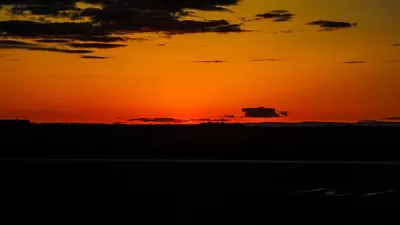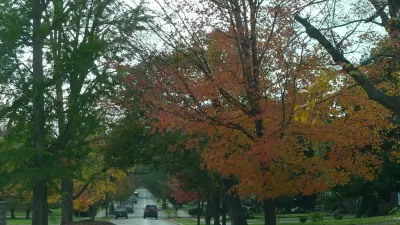As summer temperatures rise and heat waves roll through, cities can take steps to keep cool. But shedding the heat may be difficult for urban areas designed to retain it.

Most cities weren't designed with a warming climate in mind. If anything, the aim has been to keep residents warm. Madeline Ostrander writes about how the coming years will force this paradigm to shift. From the piece: "[Georgia Tech professor Brian] Stone had analyzed five decades of temperature data from fifty cities around the United States. He found that the majority were getting hotter than the rural areas around them, and the change was most profound in Louisville—an increase of about 1.7 degrees every decade since 1960."
A big part of the problem, unsurprisingly, comes down to all those heat-absorbing black asphalt roads. "The city had quietly become the country's worst example of what meteorologists call the urban heat-island effect, in which dark, paved surfaces absorb solar radiation, raising the temperature of the air around them."
Researchers found that Louisville was losing a full fifty-four thousand trees a year, both a result of changing climate and an exacerbating factor for heat. "How many lives could be spared, the researchers then asked, if the city planted more trees and grass, replaced dark asphalt and concrete with light-colored and reflective roofs and pavement, and cut back on the excess heat seeping out of buildings and the tailpipes of cars and buses?"
Whether cities can take the heat has major implications for public health. "The European heat wave of 2003, for instance, took at least thirty-five thousand lives, a disaster intensified both by global warming and, according to Stone, the heat-trapping design of cities. [A recent study] estimated that if global temperatures rise unabated and the city's population continues to grow, New York could lose more than three thousand lives every year from heat by 2080 (compared with about six hundred in 2006)."
FULL STORY: As Our Cities Grow Hotter, How Will We Adapt?

Pennsylvania Mall Conversion Bill Passes House
If passed, the bill would promote the adaptive reuse of defunct commercial buildings.

Planning for Accessibility: Proximity is More Important than Mobility
Accessibility-based planning minimizes the distance that people must travel to reach desired services and activities. Measured this way, increased density can provide more total benefits than increased speeds.

World's Largest Wildlife Overpass In the Works in Los Angeles County
Caltrans will soon close half of the 101 Freeway in order to continue construction of the Wallis Annenberg Wildlife Crossing near Agoura Hills in Los Angeles County.

Alaska Village Becomes Test Case for Climate Change Relocation
The Yup’ik village of Newtok is the first Alaska community to begin a full-scale relocation necessitated by the impacts of climate change. Another 31 Alaska communities remain vulnerable.

Amtrak Takes Lead on Texas Central Rail
The high-speed rail project isn’t a done deal, but if it moves forward, trains could begin operating in 2030.

Maine Approves Rent Relief Program
Legislators hope the assistance program will help struggling low-income households avoid eviction.
City of Costa Mesa
Licking County
Barrett Planning Group LLC
HUD's Office of Policy Development and Research
Mpact Transit + Community
HUD's Office of Policy Development and Research
Tufts University, Department of Urban and Environmental Policy & Planning
City of Universal City TX
ULI Northwest Arkansas
Urban Design for Planners 1: Software Tools
This six-course series explores essential urban design concepts using open source software and equips planners with the tools they need to participate fully in the urban design process.
Planning for Universal Design
Learn the tools for implementing Universal Design in planning regulations.


























